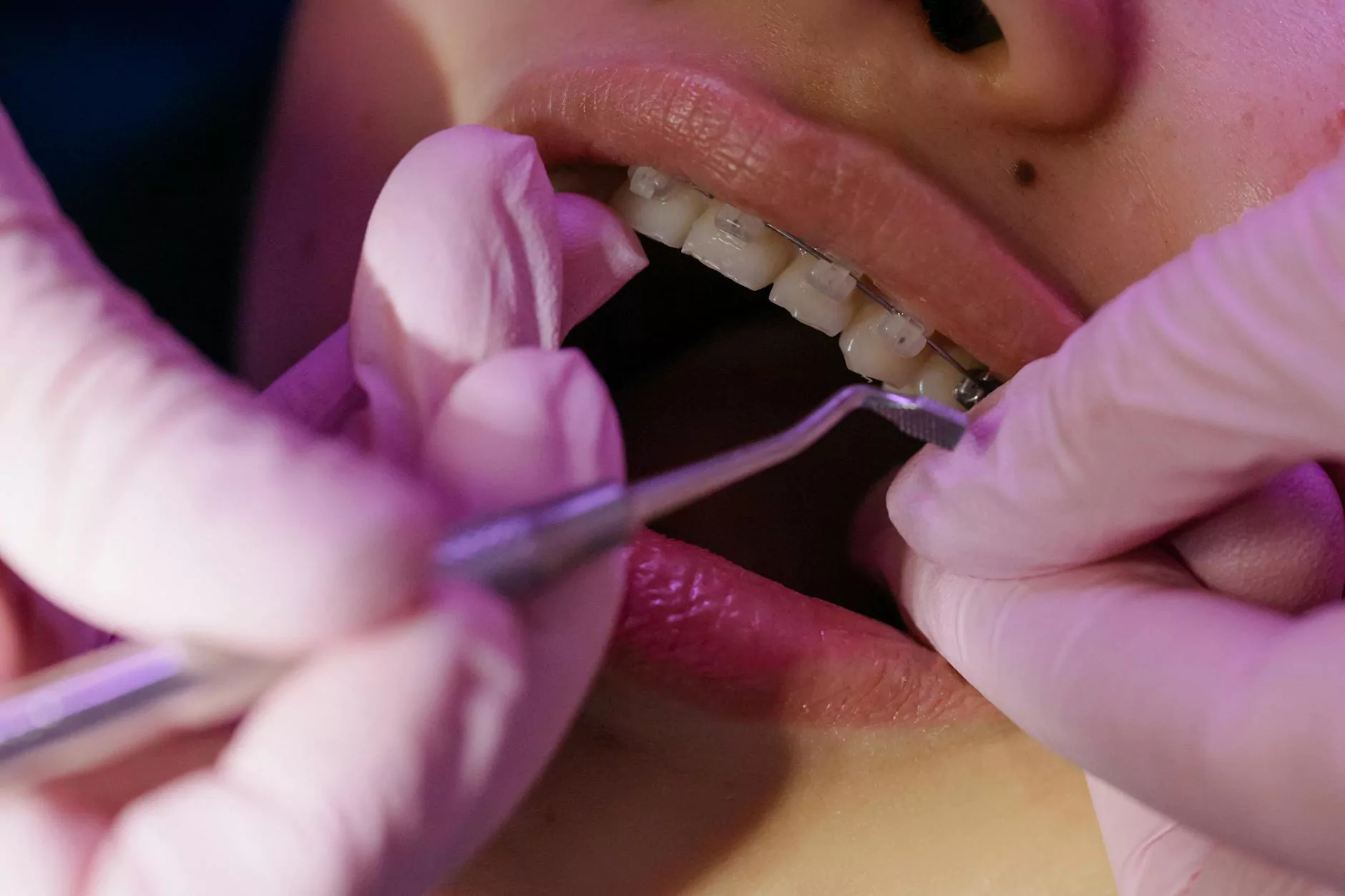Understanding Dental Occlusal Guards: A Comprehensive Guide

A dental occlusal guard, often referred to as a night guard or bite splint, is a vital tool for individuals who experience issues such as teeth grinding (bruxism) or jaw clenching. This protective device is designed to cover the upper or lower teeth, providing a cushion that absorbs the forces of clenching or grinding, thus safeguarding your dental health. In this detailed article, we will explore everything you need to know about dental occlusal guards—from their benefits and types to how they work and their role in enhancing your oral health.
What is a Dental Occlusal Guard?
A dental occlusal guard is a custom-made appliance that creates a physical barrier between your teeth. This guard helps to alleviate the pressure exerted on your teeth and jaw muscles during night-time grinding or clenching. The discomfort and potential damage caused by these habits can be mitigated effectively through the regular use of a well-fitted occlusal guard.
Why Do You Need a Dental Occlusal Guard?
There are several compelling reasons to consider investing in a dental occlusal guard, including:
- Preventing Tooth Damage: Continuous grinding can lead to chipped, cracked, or worn down teeth. An occlusal guard acts as a protective shield.
- Alleviating Jaw Pain: If you experience discomfort in your jaw muscles, headaches, or earaches, an occlusal guard can relieve tension and reduce soreness.
- Improved Sleep Quality: By reducing the noise associated with teeth grinding, it may help both you and your sleeping partner enjoy a more restful night.
- Long-term Oral Health Benefits: Protecting your teeth can also prevent costly dental treatments required to fix damage caused by bruxism.
Types of Dental Occlusal Guards
Understanding the different types of dental occlusal guards available can help you choose the right one for your needs. Here are the primary categories:
1. Soft Occlusal Guards
Soft guards are typically recommended for mild to moderate teeth grinding. Made from a softer material, they provide cushioning but may not be suitable for individuals with more severe grinding issues due to their lower durability.
2. Hard Occlusal Guards
These guards are made from a firm, durable material that offers heightened protection. They are suitable for severe cases of bruxism and are designed to withstand significant pressure, ensuring maximum tooth protection.
3. Dual-Laminated Occlusal Guards
The dual-laminated guard combines the softness of a cushioned interior with the rigidity of an outer layer. This design provides the benefits of both soft and hard guards, making it a versatile option for varied degrees of grinding.
How Are Dental Occlusal Guards Made?
The process of creating a custom dental occlusal guard entails a few vital steps:
1. Consultation with Your Dentist
Your dentist will first evaluate your oral health and discuss your symptoms. This may include a discussion of your grinding habits, jaw pain, and any related concerns.
2. Impression Taking
A mold of your teeth will be taken to ensure the guard fits you perfectly. The dentist may use a physical impression method or advanced 3D scanning technology.
3. Fabrication of the Guard
Using the impressions, a dental lab will fabricate your occlusal guard. This process typically involves advanced materials tailored for comfort and durability.
4. Fitting and Adjustments
Once the guard is ready, you will return to your dentist for a fitting. Adjustments may be made to ensure optimal comfort and effectiveness.
Benefits of Using a Dental Occlusal Guard
The benefits extend beyond mere protection for your teeth. Here are some key advantages:
- Prevention of Tooth Loss: By protecting your enamel and overall tooth structure, you significantly reduce the risk of tooth loss.
- Reduced Risk of Oral Complications: Regular use of an occlusal guard can help prevent gum disease and other oral health issues.
- Enhanced Comfort: Many users report significant relief from discomfort and soreness attributed to tmj (temporomandibular joint) disorders.
- Cost-Effectiveness: Investing in a guard may save you from future dental expenses related to repairing damage caused by grinding.
How to Care for Your Dental Occlusal Guard
Proper maintenance of your occlusal guard is crucial for its longevity and effectiveness. Here are some tips on how to care for it:
1. Daily Cleaning
Rinse your occlusal guard with water after each use. Use a soft toothbrush and mild soap to clean it gently. Avoid using toothpaste that may be too abrasive.
2. Proper Storage
When not in use, store your guard in a protective case to prevent damage or contamination.
3. Regular Inspections
Periodically check for signs of wear and tear. If you notice any cracks or significant changes in fit, consult your dentist for replacement.
Potential Risks and Considerations
While dental occlusal guards offer numerous benefits, it’s essential to consider potential downsides:
- Adjustment Period: Some users may experience discomfort as they adjust to wearing their guard initially.
- Cost: Custom guards may be more expensive than over-the-counter options. However, the investment generally pays off in terms of long-term oral health.
- Maintenance: Proper care is essential to prevent bacterial growth and ensure the guard remains effective.
Finding the Right Dental Occlusal Guard Provider
Choosing the right dental practice to provide your dental occlusal guard is critical. Here are some tips to guide your decision:
- Experience and Expertise: Look for a practice that specializes in treating bruxism and utilizes technology that ensures a perfect fit.
- Patient Reviews: Check testimonials and reviews from other patients to gauge their satisfaction.
- Consultation Time: A thorough initial consultation is crucial. This shows that the practitioner values your oral health.
The Importance of Regular Dental Check-Ups
In addition to wearing an occlusal guard, maintaining a routine of regular dental check-ups can promote overall oral health. Your dentist can monitor your tooth wear and clenching patterns to ensure any issues are addressed promptly. This proactive approach is vital to maintaining a healthy and bright smile.
Conclusion: Embrace the Protection of Dental Occlusal Guards
A dental occlusal guard is more than just a protective appliance; it’s a significant investment in your oral health and well-being. By preventing damage, alleviating discomfort, and promoting better sleep, occlusal guards play a pivotal role in maintaining not only your smile but also your quality of life. If you suspect you suffer from bruxism or clenching, consult with a dentist to explore the options available at medentalsf.com. Your journey towards a healthier mouth and a more restful night begins with this small yet impactful decision.



